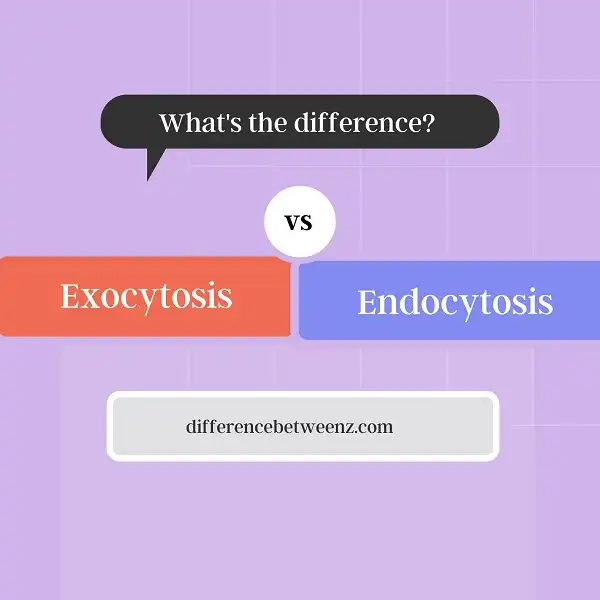There are two primary types of cellular transport: exocytosis and endocytosis. Exocytosis is the process of proteins and other materials being secreted from a cell, while endocytosis is the process of proteins and materials entering a cell. Though both processes play an important role in cell functioning, they differ in several ways. In this blog post, we’ll take a closer look at the differences between exocytosis and endocytosis.
What is Exocytosis?
Exocytosis is a vital process that cells use to export substances. It is a type of active transport, meaning that it requires the cell to expend energy to move molecules against their concentration gradient. In exocytosis, the substance to be exported is enclosed in a vesicle. The vesicle then fuses with the cell membrane, releasing the contents of the vesicle into the extracellular space. Exocytosis is used by cells to secrete a variety of molecules, including proteins, lipids, and nucleic acids. This process is also used to remove unwanted material from the cell, such as toxins and debris. While exocytosis is important for cells to function properly, it can also be harnessed by viruses as a means of infecting new host cells. As such, exocytosis is a complex process with implications for both health and disease.
What is Endocytosis?
Endocytosis is the process by which cells internalize molecules by enclosing them in vesicles. There are three main types of endocytosis: phagocytosis, pinocytosis, and receptor-mediated endocytosis. Phagocytosis is the process by which cells engulf solid particles, such as bacteria or food particles. Pinocytosis is the process by which cells internalize liquids, such as nutrients or synaptic transmitters. Receptor-mediated endocytosis is the process by which specific molecules are taken up by cells in response to binding to specific receptors on the cell surface. Endocytosis is an important process in many cellular processes, such as nutrient uptake, synaptic transmission, and immune response.
Difference between Exocytosis and Endocytosis
Exocytosis and endocytosis are two processes that cells use to move molecules across the cell membrane. Both processes are used to transport molecules that are too large to cross the cell membrane on their own. Exocytosis occurs when a cell secretes molecules, such as hormones or enzymes, into the extracellular space. This process involves the fusion of the cell membrane with a vesicle that contains the molecules to be released. The contents of the vesicle are then discharged into the extracellular space, and the vesicle membrane is reabsorbed by the cell. In contrast, endocytosis occurs when a cell takes in molecules from the extracellular space. This process involves the internalization of a portion of the cell membrane, along with any molecules that are bound to it. The membrane then forms a vesicle, which is brought back into the cell. Endocytosis can occur via two different mechanisms: pinocytosis and phagocytosis. Pinocytosis is a form of endocytosis that involves taking in small particles suspended in fluid.
Conclusion
Exocytosis and endocytosis are both important processes that occur in cells. However, they have different functions. Exocytosis is the process of secreting proteins or other molecules out of a cell, while endocytosis is the process of taking in proteins or other molecules into a cell. These two processes are important for maintaining healthy cells and tissues.


